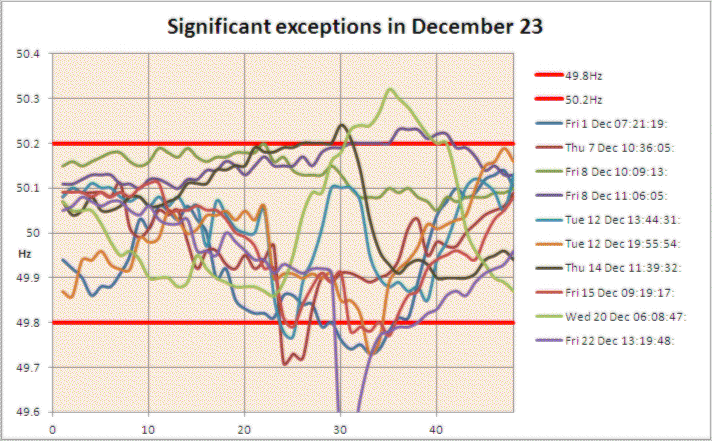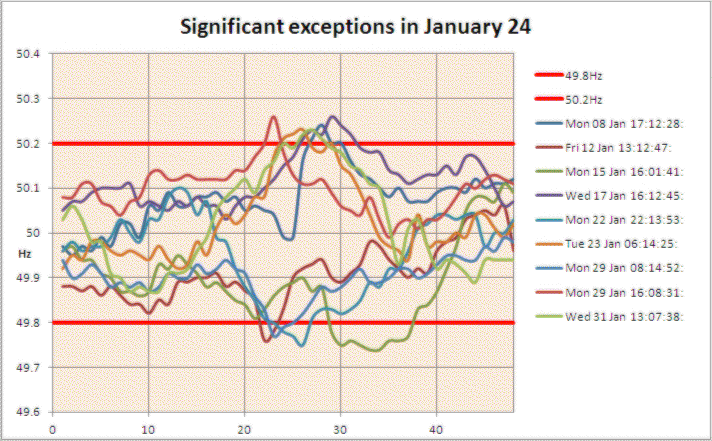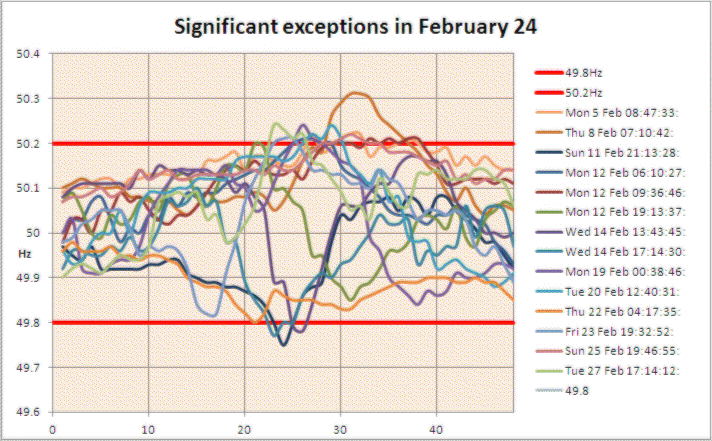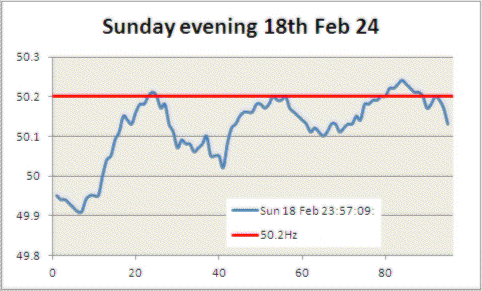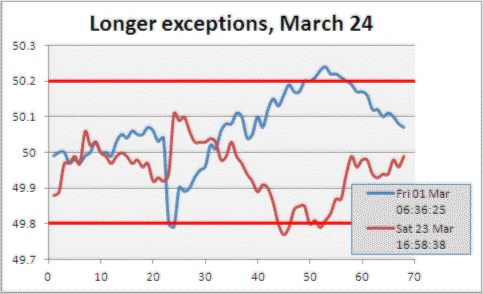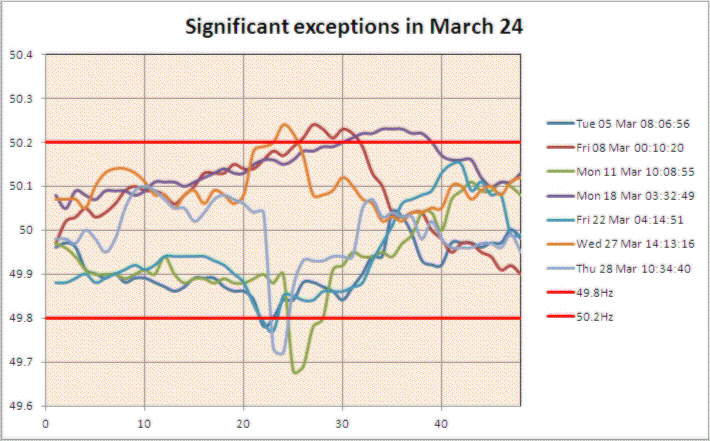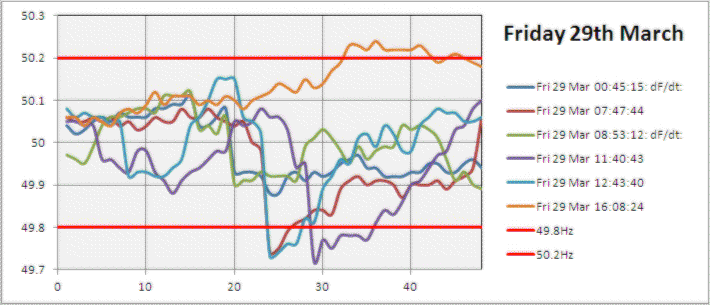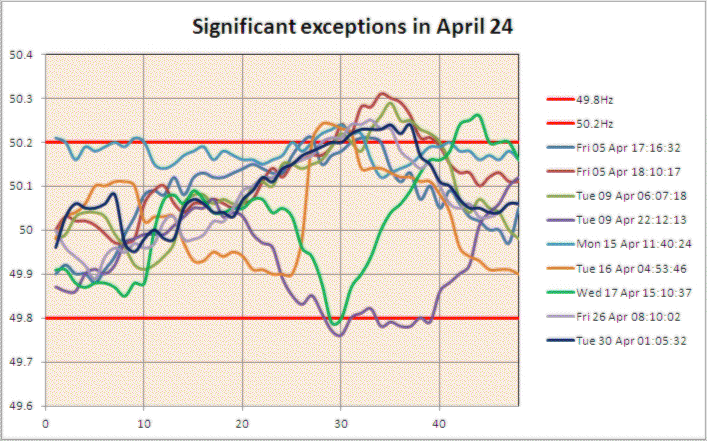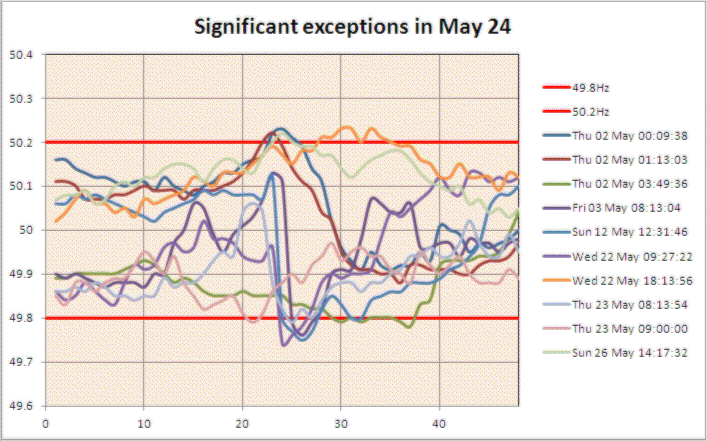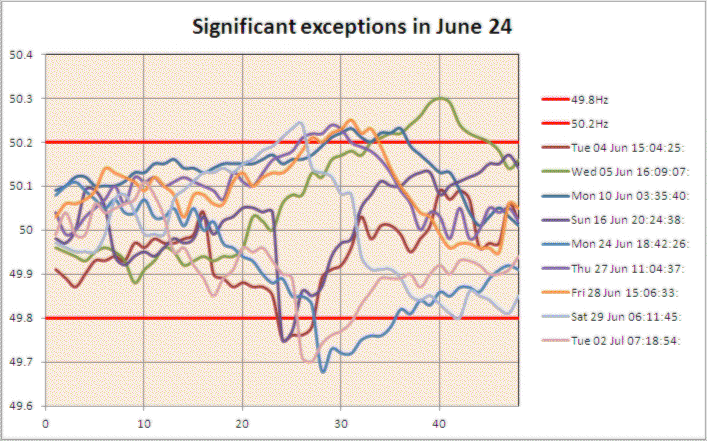Mains voltage and frequency versus time: excursions

Frequency excursions
The previous page noted that "Under normal operating conditions the Electricity System Operator (ESO) is obligated to maintain the system frequency between 49.8 and 50.2 Hz". Having seen over the last few years that the frequency does occasionally get to and sometimes beyond these limits, I thought it would be interesting to see how often this happened and whether there is any long-term trend or correlation with external events such as the weather. For instance, the grid might be getting harder to manage with an increasing proportion of renewable energy, or it might not, or it might even be easier. So the software has been modified to trap any events where the frequency has reached or exceeded 50.2Hz or 49.8Hz, and to log the frequency for a few minutes either side of the excursion.
The logging started in November 2023 and I'll occasionally update the results here. Mostly, the frequency briefly reaches the limit but stays there for no more than 30 seconds before it recovers; this is recorded as an event but according to the above definition of normal conditions is perfectly allowable. But occasionally, the frequency strays beyond the limit, sometimes for several minutes: see for instance 28th November, 20th December, 15th January, 8th February or 18th March. I have selected the more notable of these events to graph them for illustrative purposes.
The monthly record of all events is as follows:
| November 2023 |
52 |
December 2023 |
45 |
| January 2024 |
34 |
February 2024 |
47 |
March 2024
|
60 |
April 2024 |
77 |
| May 2024 |
34 |
June 2024 |
54 |
Graphs of a (purely subjective) selection of the more extreme events for each month are presented here. Note that figures on the x-axis refer to the logging entry, not to an exact time. The logging is done at approximately 33-second intervals so for 48 measurements the duration of each graph is about 26 minutes. The time stamp for each entry refers to the end of the graph; the actual excess will usually have occurred about 13 minutes beforehand, although depending on the nature of the excursion this is not always the case.
Last updated 12th July 2024
Usually an exception is transient, only lasts maybe a minute or two, and doesn't recur for a while. But sometimes, the frequency transgresses more than once in the course of a few minutes. Here is an example of the ESO trying repeatedly to prevent it from going over 50.2Hz. The total length of the graph is about 50 minutes. (It happened again about 25 minutes later, see Mon 19 Feb 00:38:46 above.)
This shows a couple of events where there was a dramatic change over less than a minute, followed by a recovery which went a bit too far. Notice that these can happen in either direction.
The ESO had quite a difficult time of it on Friday March 29th. The items stated as dF/dt are points where the frequency changed faster than 0.3Hz per minute even if the limit wasn't breached; but in several other cases the frequency did fall very quickly below 49.8Hz.
By contrast, April saw several overspeeds but relatively few underspeeds
May seems to have been a lot quieter
June was moderately excessive




